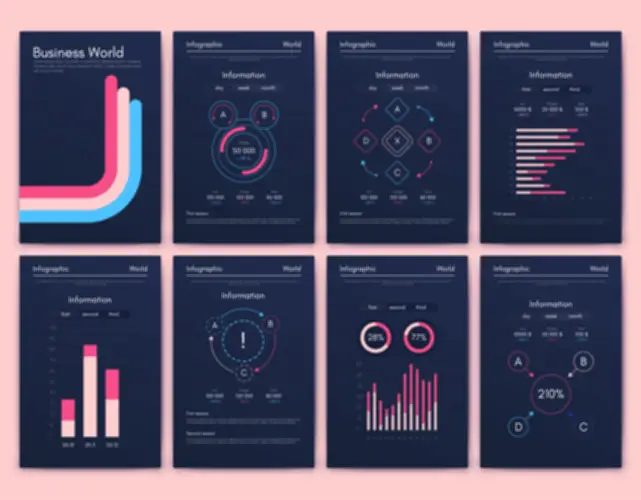These examples spotlight how AI techniques—ranging from machine learning on biological data to deep learning-based molecular simulations—are accelerating drug repurposing efforts, offering new therapeutic potentialities for most cancers treatment 47. These innovations are anticipated to expand the vary of viable therapeutic candidates and improve the rational design of both small and enormous molecules 36. These paradigm shifts in drug improvement, particularly the transfer towards data-intensive approaches, similar to high-throughput screening and drug repurposing, have set the stage for the combination Operational Intelligence of artificial intelligence.
What Are The Advantages Of Ai In Clinical Trials?

This know-how has been utilized throughout a number of therapeutic areas, including oncology, neurology, and infectious diseases. Through partnerships with academic institutions and pharmaceutical firms, Atomwise has contributed to the identification of recent candidate molecules, significantly decreasing the time and resources required for early-stage discovery 93,94. It was identified by a deep studying mannequin often identified as Chem web, which was educated to predict antimicrobial activity across various compounds. The AI system searched chemical databases to search out molecules with the potential to combat drug-resistant bacteria, and Halicin emerged as a promising candidate. In Distinction To artificial intelligence in pharmaceutical industry conventional antibiotics, Halicin operates by disrupting the proton gradient across bacterial cell membranes, a mechanism that was previously unrecognized. The drug demonstrated broad-spectrum antimicrobial exercise, effectively concentrating on a wide range of bacteria, including these proof against a quantity of existing antibiotics.
Artificial Intelligence In Prescribed Drugs And Biotechnology: Current Developments And Innovations
Recent regulatory evaluations emphasize the rising consensus on the need for risk-based oversight frameworks to make sure the ethical, safe, and scalable use of AI in drug and organic product development. A multidisciplinary evaluation reflecting on FDA workshops has highlighted the significance https://www.globalcloudteam.com/ of practical regulatory guidelines, cross-border harmonization, and the mixing of human oversight in AI-assisted decision-making processes. These reflections underscore that beyond technical validation, regulatory approaches must additionally handle broader points such as data privacy, transparency, governance, and equitable entry. As global businesses navigate differing regulatory perspectives, a unified ethical and legal framework for AI in drug improvement is becoming increasingly very important 97. Oftentimes, there are medicine that are already developed and out on the market that may be found to effectively deal with other diseases or situations.
- Current improvements include AI-driven cancer therapy goal identification, optimized drug combinations, and automatic methods for improved production effectivity and sterility testing.
- Ethical ideas, understood as duties that promote human dignity in the presence of clever techniques, must information the event and deployment of AI in drug development contexts.
- Ormeloxifene, originally developed as a non-steroidal oral contraceptive, has been repurposed for cancer therapy utilizing AI-driven approaches.
- It was discovered to be efficient in decreasing the virus’s capacity to contaminate lung cells because of its anti-inflammatory and antiviral properties 84.
- AI algorithms can course of these massive, heterogeneous datasets to determine patient subpopulations with specific scientific characteristics, predict progression trajectories, and simulate trial outcomes under varied situations.
By understanding how illnesses progress at a molecular level, AI aids designing more practical medication, ensuring that compounds are not only progressive but in addition highly specific to the goal. AI allows quicker changes to chemical structures and increase the possibilities of success. By 2025, it is estimated that 30% of recent medicine shall be found utilizing AI, marking a big shift within the drug discovery course of. In trial design, AI-powered analytics allow the simulation of a number of study situations by integrating historical scientific information, disease progression models, and demographic variability. This permits researchers to optimize key parameters similar to sample dimension, endpoint selection, and stratification strategies. Moreover, adaptive trial protocols have benefited from real-time AI monitoring methods able to analyzing incoming knowledge streams through the trial.
Traditional drug improvement sees only about 10% of candidates making it via scientific trials. By analyzing massive datasets and figuring out promising drug candidates earlier in the process, AI increases the likelihood of medical success, making drug improvement not simply faster, however smarter. Ormeloxifene, originally developed as a non-steroidal oral contraceptive, has been repurposed for most cancers treatment using AI-driven approaches.

By reducing the variety of empirical studies required and enabling earlier go/no-go choices, the fusion of AI with pharmacokinetic modeling contributes on to cost discount, quicker development, and improved scientific outcomes 55,56. INS018_055 is an revolutionary drug candidate for idiopathic pulmonary fibrosis (IPF), a severe lung illness with restricted therapy choices. Developed by Insilico Medicine, this small molecule was designed using deep studying and generative AI models, which screened hundreds of thousands of chemical structures to foretell an optimal candidate. AI considerably accelerated the drug’s development, permitting it to progress from discovery to Part 1 clinical trials in report time. INS018_055 represents a breakthrough in AI-driven drug discovery, showcasing how machine studying can quickly determine novel remedies for complicated illnesses 87. To optimize patient choice for osteoarthritis (OA) scientific trials, a machine learning (ML) strategy was developed to establish individuals with a higher chance of disease development.
Janssen is main the cost with over 100 AI projects in scientific trials, patient recruitment, and drug discovery. Their Trials360.ai platform exemplifies how AI can streamline trial processes, bettering speed and efficiency. Regardless Of the growing number of AI-driven instruments in pharmaceutical R&D, several crucial limitations continue to hinder their efficient translation into real-world success. Pharmaceutical data originate from extremely diverse sources, including omics datasets, medical information, imaging, and chemical constructions, which regularly differ in format, high quality, scale, and completeness. These discrepancies can impair model efficiency, reduce reproducibility, and require extensive preprocessing and standardization 96. Complementing this, pure language processing (NLP) enables the extraction of structured information from vast quantities of unstructured textual content, corresponding to scientific notes, pathology reports, radiology descriptions, and biomedical literature.
Nonetheless, now with the help of AI, pharmaceutical corporations are dramatically shortening this timeline and might help drive down costs. AI tools are in a position to rapidly analyze large datasets of chemical compounds, organic interactions, and disease mechanisms. The pharmaceutical business is on the purpose of a serious transformation, pushed by the facility of AI. From streamlining drug discovery to accelerating development and approval processes, AI is unlocking billions in value. Though there have been notable successes, such as Baricitinib—repurposed for COVID-19 treatment using AI-based goal prediction—and the speedy design of DSP-1181, failures are much less usually reported. Several AI-predicted candidates have shown promise in silico but failed to replicate efficacy in vitro or in early scientific phases, typically as a outcome of overfitting, flawed assumptions, or lack of biological plausibility 91,92.

From functions similar to disease identification and analysis, drug discovery, optimization of clinical trials, or improving manufacturing effectivity, AI is accelerating the trade. With huge quantities of organic, chemical, and affected person data at its disposal, the pharma industry is uniquely positioned to harness AI’s full potential. As A End Result Of, after all, information is the heart of AI and the pharma trade has a lot of data at it’s disposal. AI is rapidly reshaping drug discovery, and AlphaFold is an ideal instance of its potential.
For occasion, machine studying fashions skilled on EHR knowledge can detect hidden phenotypes or patterns indicative of eligibility, thus enhancing affected person stratification and decreasing recruitment time. Moreover, RWD helps exterior management arms, permitting researchers to match intervention groups with historical real-world cohorts, which is especially useful in rare ailments or moral conditions the place placebo use is proscribed 74,75,76. One particularly difficult area the place AI has proven promise is the prediction of interactions between conventional drugs and natural medicinal merchandise, that are increasingly used as dietary supplements. These pure products sometimes encompass complicated mixtures with poorly characterized pharmacokinetics, making conventional interaction screening methods less efficient. AI algorithms can integrate large-scale knowledge, including chemical structures, molecular pathways, pharmacological properties, and recognized interaction patterns, to deduce potential dangers and mechanistic pathways of drug–herb interactions.
For instance, deep studying models that contemplate 3D conformations, protein–ligand interactions, and dynamic conduct are revealing new “druggable” areas 36. As Quickly As medical trial candidates are chosen, AI instruments are additionally helping optimize study designs and monitor real-time patient responses. This data-driven strategy personalizes trials, improves success rates and reduces patient dropout charges ultimately bringing efficient remedies to market quicker. Regulatory bodies require explainable AI (XAI) approaches that can justify molecular selection and decision-making processes, especially in contexts involving patient security. Companies are responding by incorporating XAI strategies into growth pipelines, aiming to build fashions which may be both highly effective and interpretable 108. One Other complicated problem is the query of mental property (IP) rights for AI-generated drug candidates.